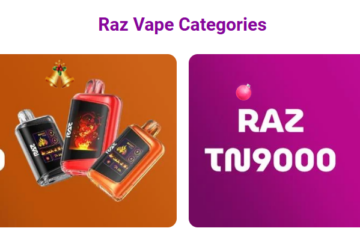In the ever-evolving world of digital marketing, the variety of ad formats has expanded significantly, allowing brands to engage with consumers in creative and effective ways. One such advertising format is the Interstitial Ad. These ads have gained substantial popularity for their ability to capture user attention by appearing at strategic moments during a user’s interaction with an app or website. In this article, we will explore what interstitial ads are, how they interstitial ads, their advantages and challenges, and how companies like Monetag are utilizing them to maximize their digital advertising efforts.
What Are Interstitial Ads?
An Interstitial Ad is a type of advertisement that appears on a screen during natural transition points in the user experience, often covering the full screen of the device. These ads are typically displayed between two content views or activities and are designed to “interrupt” the user experience momentarily. The most common places where interstitial ads appear are during page loads on websites, between levels in mobile games, or after completing a task in apps.
Unlike banner ads, which typically occupy a smaller portion of the screen, interstitials take over the entire screen, making them more noticeable. The user must interact with the ad in some way—such as closing it or clicking on a call-to-action—before returning to their original task or content. These ads can be static images, videos, or rich media that feature interactive elements.
How Do Interstitial Ads Work?
Interstitial ads are typically triggered by specific user actions. For example, on mobile apps, users might encounter an interstitial ad between transitions from one activity to another or between game levels. On websites, interstitial ads may appear after a user navigates from one page to another or when a page has fully loaded.
There are several variations of interstitial ads:
- Static Interstitials: These are basic image-based ads with a static visual that takes up the entire screen.
- Video Interstitials: These ads often play a short video before allowing users to continue with their interaction. Video interstitials tend to have a higher engagement rate because of the immersive content format.
- Rich Media Interstitials: These can include animations, interactivity, and dynamic content that encourages user interaction. They are often used to create a more immersive and engaging experience for the user.
Interstitial ads are designed to be displayed only at natural transition points in the user journey, ensuring that they do not disrupt the overall experience too much. The timing and relevance of these ads are critical to their success.
Advantages of Interstitial Ads
There are several reasons why interstitial ads are an appealing option for marketers looking to reach a large audience. Below are some of the key benefits:
- High Visibility and Engagement: Since interstitials cover the entire screen, they naturally draw more attention compared to smaller ad formats. Their high visibility increases the chances of users noticing and interacting with the ad.
- Effective for Mobile Advertising: With mobile usage on the rise, interstitial ads are particularly effective in apps and mobile websites. The full-screen format works well on smaller devices, providing a visually appealing experience that captures users’ focus.
- Better Performance Metrics: Studies have shown that interstitial ads can generate higher click-through rates (CTR) and conversion rates compared to other ad formats like banner ads. This is partly due to the immersive nature of the ad and its ability to interrupt the user’s flow in a non-disruptive way.
- Rich Media Opportunities: The format allows for a variety of media types, such as video, interactive elements, or animated graphics, which can help make the ad experience more engaging and memorable. These features contribute to a more immersive brand experience.
- Optimized for User Experience: When implemented correctly, interstitial ads appear at natural pauses or transitions in the user experience, making them feel less intrusive and more like a seamless part of the content.
Challenges of Interstitial Ads
While interstitial ads offer a variety of benefits, there are also some challenges associated with this format that advertisers must consider:
- User Frustration: One of the major drawbacks of interstitial ads is the potential for user frustration. If the ads appear too frequently or at inopportune times, such as during critical moments in the user experience, they can annoy users. This frustration could result in users abandoning the app or website altogether.
- Ad Blockers: With the increasing popularity of ad blockers, there is a risk that interstitial ads may not be visible to some users. Ad-blocking software can block not only banner ads but also interstitials, reducing the effectiveness of these campaigns.
- Potential for High Bounce Rates: If users are unable to close the interstitial ad quickly, they might exit the app or website entirely, which leads to higher bounce rates. Marketers need to ensure that the interstitial ad can be easily dismissed after a short duration to prevent users from abandoning the site.
- Increased Load Time: For websites, interstitial ads may slow down the page load time if not optimized correctly. A delayed user experience can lead to frustration and negatively impact the overall website performance.
Monetag and Interstitial Ads
Companies like Monetag, a cutting-edge digital marketing platform, are incorporating interstitial ads into their advertising solutions to help businesses maximize user engagement and achieve higher return on investment (ROI). Monetag specializes in providing advanced monetization strategies for publishers and advertisers. By leveraging innovative ad formats like interstitials, Monetag helps clients create more impactful, user-centric campaigns.
Monetag uses data-driven insights to optimize ad delivery, ensuring that interstitial ads are displayed at the most effective times and under the most relevant contexts. Their platform supports various ad formats, including video and rich media interstitials, and provides real-time analytics to track performance and make adjustments as needed.
Additionally, Monetag offers a range of tools for advertisers to target specific audience segments. By serving interstitial ads to the right users at the right moments, companies can improve their ad relevance and achieve higher engagement rates, leading to better conversion rates.
Best Practices for Using Interstitial Ads
To maximize the effectiveness of interstitial ads, it’s essential to follow some best practices:
- Timing is Everything: Interstitials should appear at logical transition points, such as between game levels or when a user switches between sections of an app or website. Avoid bombarding users with these ads too frequently.
- Provide a Clear Exit: Ensure that users can easily close the interstitial ad if they wish to continue without engaging with it. This reduces frustration and helps maintain a positive user experience.
- Keep It Relevant: Use targeting tools to serve ads that are relevant to the user. Personalizing interstitial ads based on user behavior or demographic data increases the likelihood of engagement and conversion.
- Limit Frequency: Overexposure to interstitial ads can lead to user irritation. Limit the number of times the ad is shown to the same user to avoid ad fatigue.
- Optimize for Mobile: Since interstitials are highly effective on mobile, ensure that the ads are optimized for various screen sizes and devices to provide a seamless user experience.
Conclusion
Interstitial ads are a powerful tool in the digital marketing landscape, offering a high-impact, full-screen advertising experience that can capture the user’s attention and drive engagement. When used strategically, they can lead to higher conversion rates and a more effective advertising campaign. However, marketers must be mindful of the timing and frequency of these ads to avoid user frustration.
Companies like Monetag are harnessing the power of interstitial ads to help brands reach their audience more effectively. By offering advanced targeting and real-time analytics, Monetag enables businesses to deliver ads that are not only engaging but also aligned with the preferences of their users. Whether you’re a mobile game developer, a website publisher, or an e-commerce brand, understanding and leveraging interstitial ads can significantly enhance your advertising efforts and drive better results in today’s competitive digital environment.



0 Comments